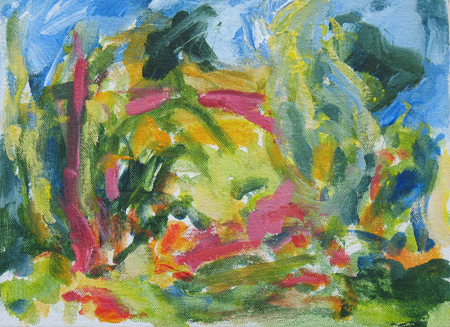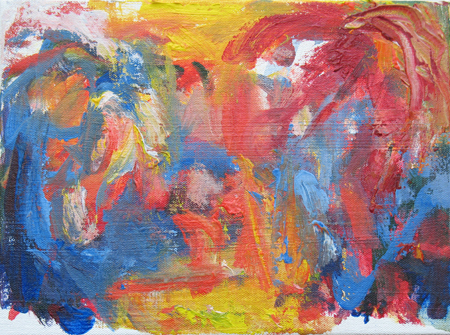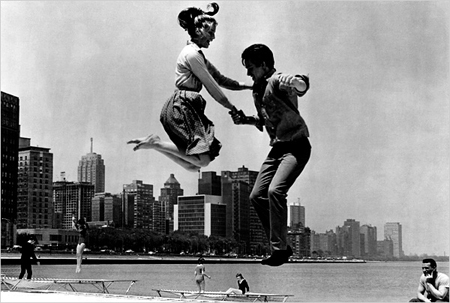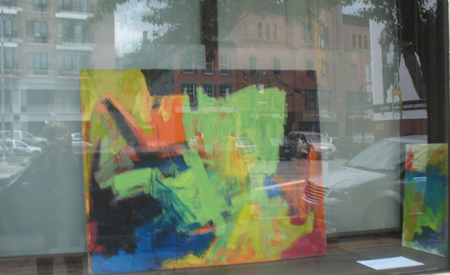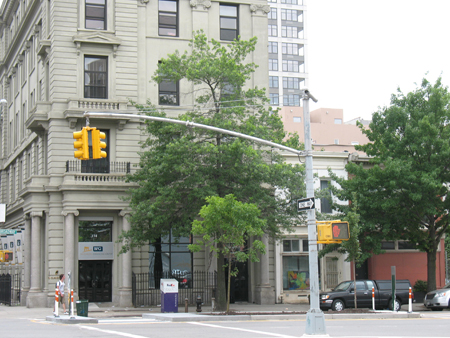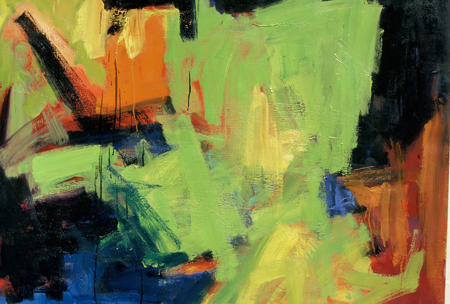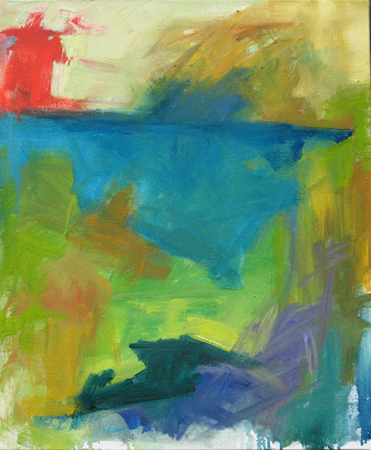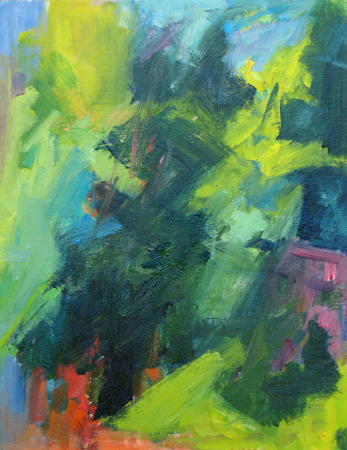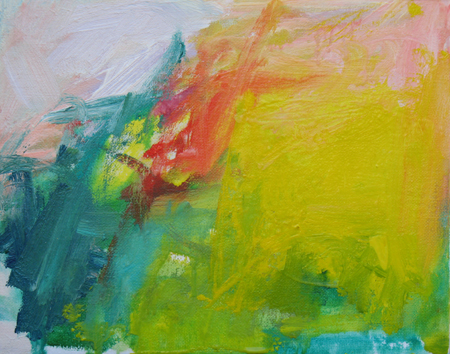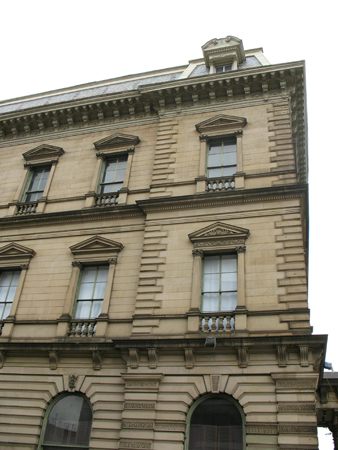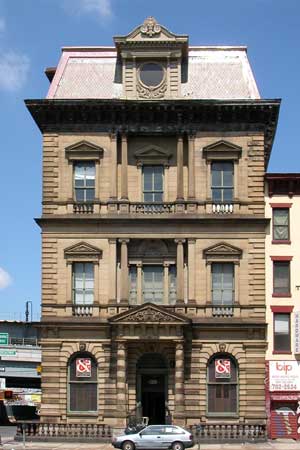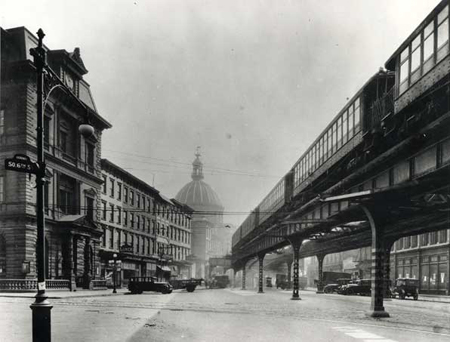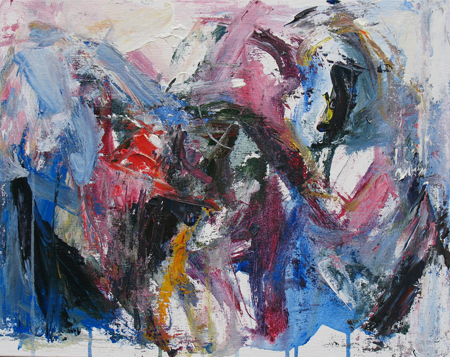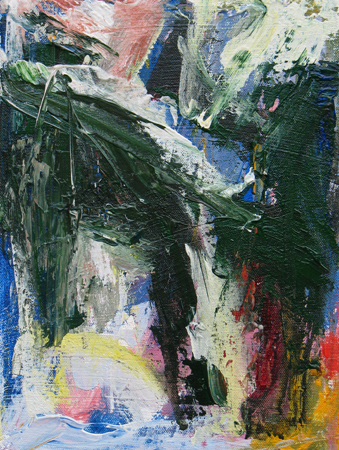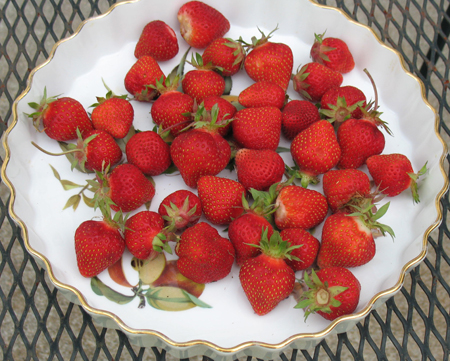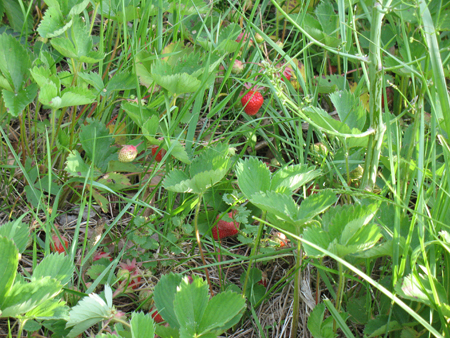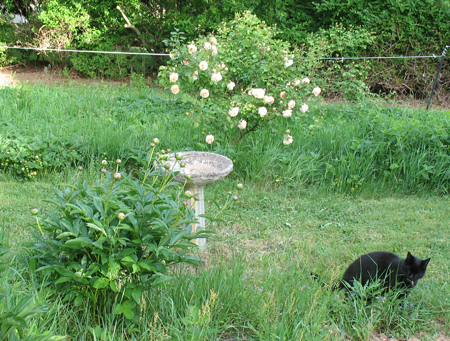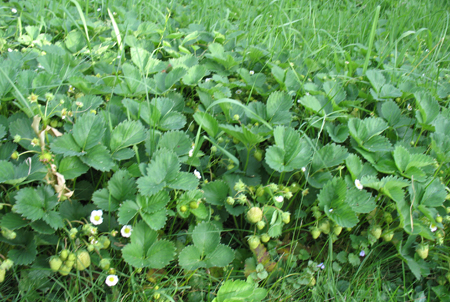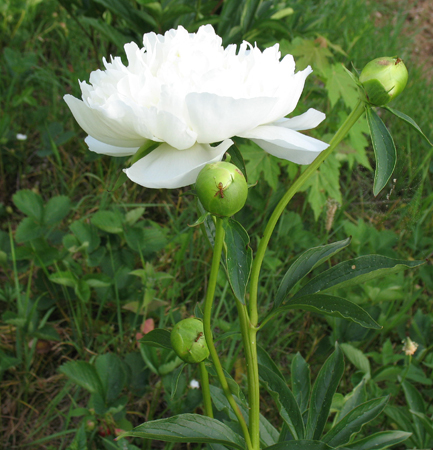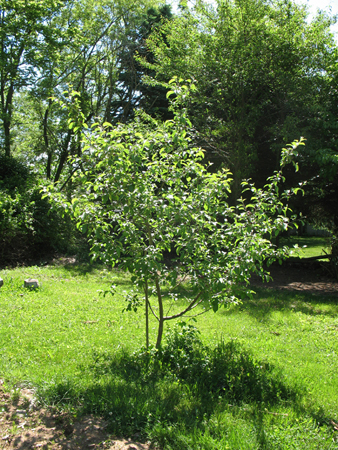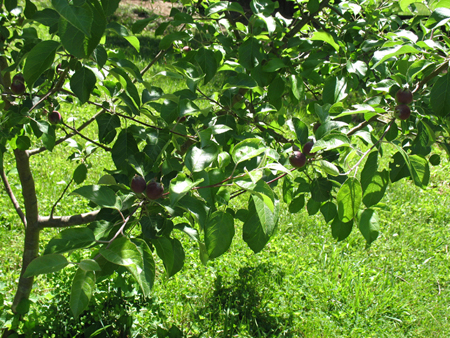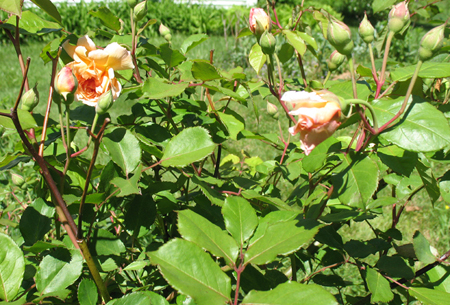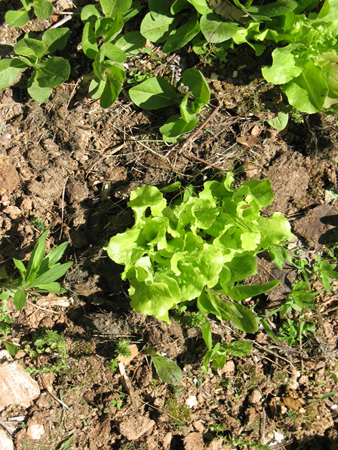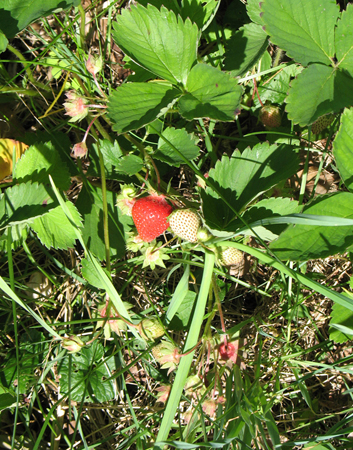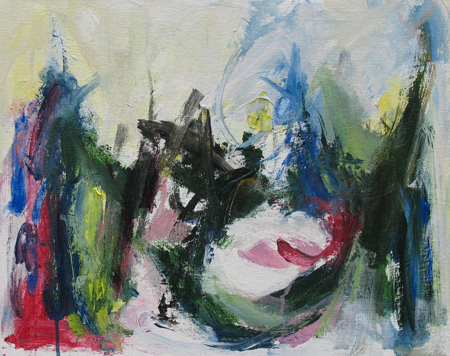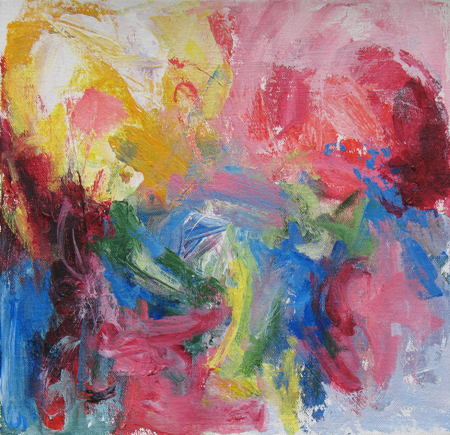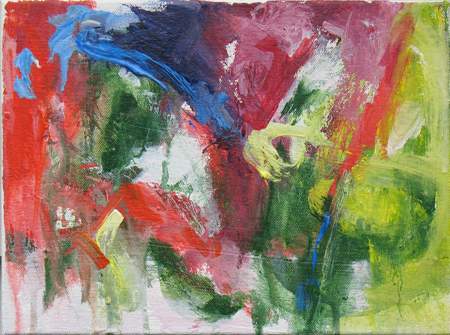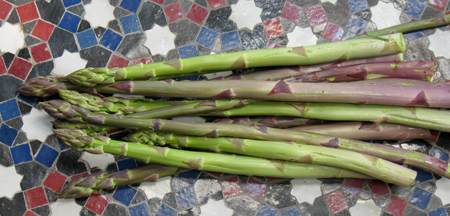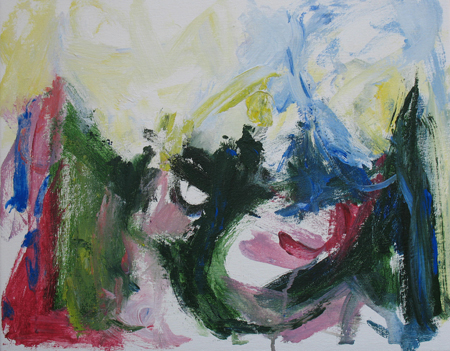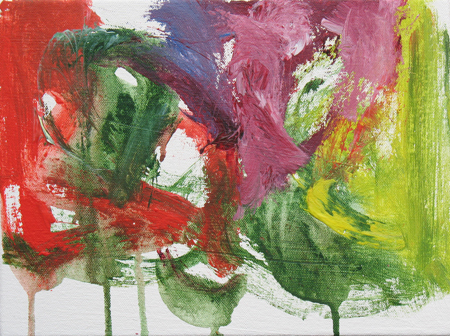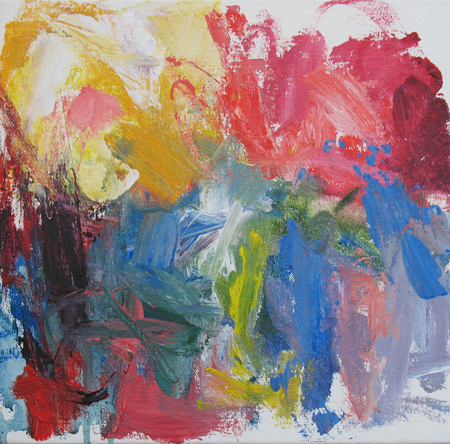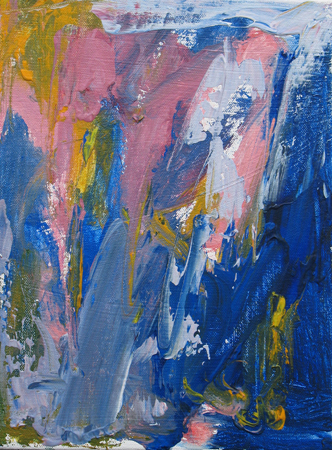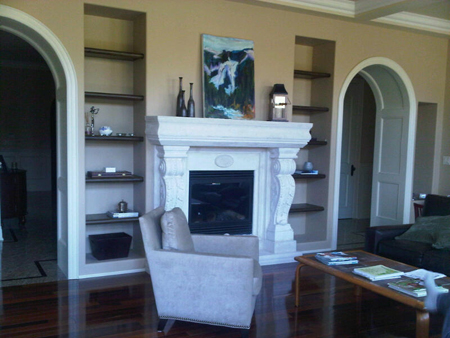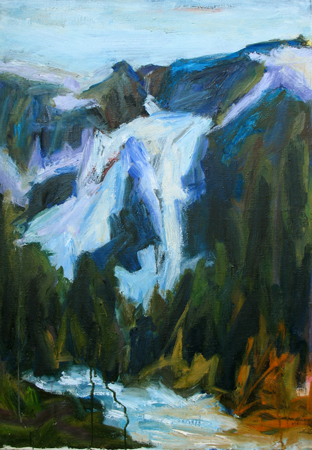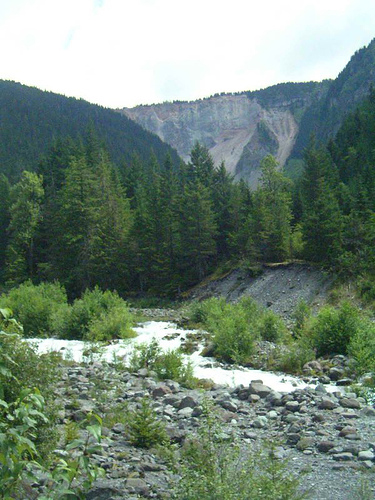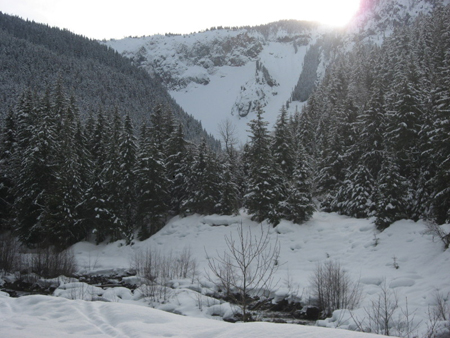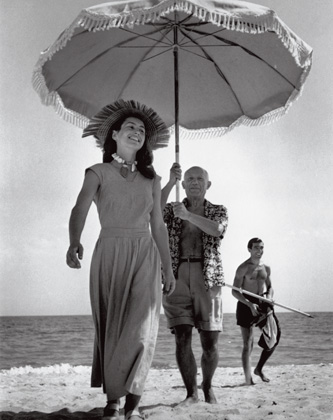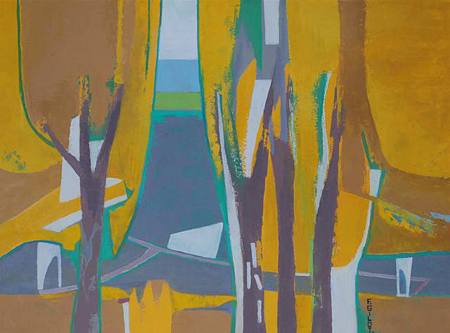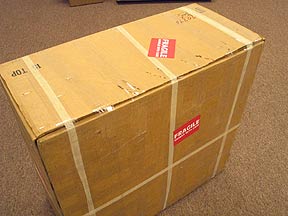This is an interview with abstract painter Jessica Torrant, a fellow member of the new Artisans Gallery Team, that was formed on Etsy to highlight a curated team of gifted artisans and fine artists. Jessica lives in Connecticut and has exhibited in the US and the UK. I noticed her colorful and unique work when I first joined Etsy and have featured it in my own treasuries, or curated collections on the site.
VW I know that you’re a painter and that you’ve had a successful online shop for a few years. Can you fill us in on your background as an artist and tell us a little about yourself?
JT First let me say, hello Victoria, hello AGTeam and blog visitors! It’s an honor to be participating in this interview with you and I’m a huge fan of your work.
I grew up an only child on a dirt road with fields and woods as my playground. I’ve always been drawn to the arts, from dance and theater to singing and of course, drawing and painting. I was very fortunate to have a creative family that supported my calling. My earliest influence was my grandmother who took up painting later in life and was a very talented, albeit humble, painter. I have memories of painting with her and watching her work on still life, bird studies and paintings of barns on the farm. She passed away when I was ten, but I still feel her supporting me. She once said, “She has a very confident hand,” to my mother as I was painting a little flower. I still remember the flower, I remember her voice saying the words and the smile that crossed my face while I pretended not to be listening. I remember the feeling of pride that swelled within me. I wanted to be a painter just like grandma.Â
Flash forward to my college years when I studied painting at the University of New Hampshire. It was a very traditional school and they taught me how to paint like the Old Masters. After a couple of years working from figures and still life, I went to California for a semester exchange at UCSC. I was introduced to abstract contemporary art, wandering around in awe at SFMOMA – it was life long love at first site. I returned to UNH to finish my degree in 1999 and since then I’ve focused almost entirely on abstract art. I leave a little room for the occasional landscape or work from life. I like to touch base with those skills every so often to keep me grounded. Â Â
VW Â It appears that most of your work is vividly colorful abstracts, some derived from the landscape, but you also have a highly geometric focus. What is the context of your work, do you have any set ideologies as a painter? (formalist, expressionist, etc)
JT I work in several voices, all of which are my own and consistent within themselves. One voice leans towards expressionist (and in my mind and dreams, this has the largest pull for me) but there is also another part of me that needs to express some form of control which leads to more detailed, organized, abstract maze-like paintings. So there is action painting and then what I’d call puzzle paintings, because painting them is very similar to the state of mind and process of putting a puzzle together.
Then there are the paintings, like my Horizon series, that are very simplified abstract landscapes/color fields. These are a meditation for me to paint and to view. I don’t like to limit myself to what I’ll paint next, though I do seem to keep rotating between these three states of mind:Â
fun/intuitive/loose/freedom/energy/gesture
controlled/slow and steady/focused/organized/detailed/networking
meditative/peaceful/space/connected/quiet/pure/color/texture
VW Who are some of your influences, whether they’re painters, sculptors, musicians, poets or ‘none of the above’?Â
JT As I mentioned, my grandmother Irma was my first and foremost influence. I love Picasso. I may have hated the man if I had known him personally, but he blew my mind the first time I saw ‘Guernica’ in a fourth grade art club. (I was a lucky kid to grow up in the 80’s when there was actually funding for art programs in public schools). Since then, I’ve always been drawn to, and powerfully moved, by his work. My mother and I went to Paris in 2001 and we visited The Musée Picasso where I got to sit and sketch from his work for about an hour or so (thanks Mom!). It was one of the most amazing experiences of my life.
I love the Abstract Expressionists including; Frankenthaler, Rothko, Krasner, Pollock, de Kooning – oh I could go on and on! Some contemporary painters that I admire include team members Mary Ann Wakeley and Kendra Zvonik and you, Victoria. I also love Elis Cooke, Martha Marshall, Meghan Henley, Jean Hutter and Aisyah Ang – all of whom are also on Etsy. Truly I could go all day listing names, this is just a sampling.Â
Dreamstate 2. Acrylic on canvas, 24″x18″
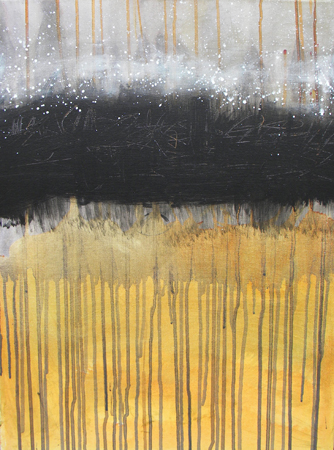
VW Do you work spontaneously or is there a set time that you devote to the paintings on a daily/weekly basis?
JT I have mixed luck planning to paint. Most of the time it happens spontaneously and once I begin, it dominates my life and takes over for a four to five day long ongoing session. Then I come up for air, reconnect with the world and wait for the next cycle to begin.Â
VW How do you stay current, or is that important to you. Do you visit galleries and museums on a regular basis, or travel to view art and cultural events?
JT Because I’m in such a rural area and I tend to be a bit of a hermit or homebody, the internet is my primary portal into the world of current art. It’s also the season. Once spring comes, I’m more apt to hop on a train to NYC or drive up to Boston for a day in the city, appreciating art and culture. The end of winter is rather gloomy here in New England – we’re all itching for spring!
Promise Land. Acrylic on canvas, 12″x12″
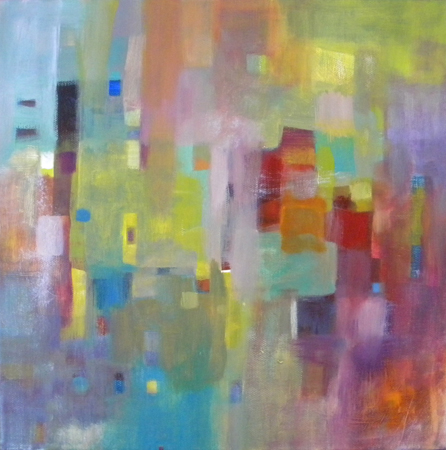
VW Some artists suggest that the studio is too private for them, that they require a social forum for their work. Does networking with other artists and developing community have much bearing on your life as an artist and if so, how does it inform your work and process?Â
JT I need to work in a private space. I had a studio for a while in a mill building with about 40 other artists and I could never relax, even behind closed doors with no one watching. It confirmed that I can’t just say “this is the artist’s dream – get with the program, you’ll love it!”. I truly need to be alone when I paint.
It took years for me to even allow my husband in the same space. Now I have a studio in our backyard that I use during the warmer months (another reason I’m ready for spring – I can’t wait to get out of our basement!). I love working from home with my dog, and taking a break to do some weeding in the garden. It’s wonderful. Still, there is a down side and that is community. It’s a solitary life and as an only child, this comes naturally to me. However,  I need the balance of alone time along with social interactions. The relationships, and indeed close friendships, that I’ve made with other creative people online act as daily communication and touch stones. Without those connections, this experience would be totally isolating. I am extremely grateful for those relationships. Â
Puzzled. Acrylic on canvas 12″x12″
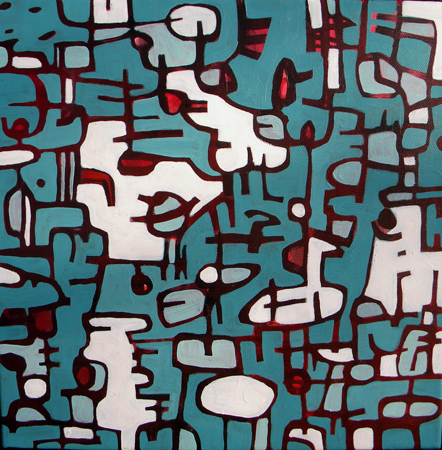
The Process in Blue. Acrylic on canvas, 24″x18″

VW Exhibiting in galleries and museums – are you involved in showing your work in brick and mortar galleries?
JT I have exhibited in the past and would like to focus more attention on gallery exposure in the future. The last year or so I’ve slowed down with shows and focused more on my online business, but I feel like that isn’t enough for me anymore. I need to get more work out there in the flesh.Â
VW Can you talk about how you began selling your work online and what challenges you faced?
JT I began selling my work on eBay in 2004 while working for a frame shop. It started as a “why not?” because I wasn’t doing anything else with the artwork that I kept churning out in private. To my delight, it took off and I quit my job in 2005 to go for it full time. At the time, there was a market for what I was making at the prices that I was asking and everything just fit into place. It was a golden era for me to enter into, when selling art online was still a bit of a novelty niche, but buyers were catching on. Some buyers realized they were getting a deal and it wouldn’t last so they bought a lot. One would think that would be the best thing for me, but actually it spoiled me with a false impression of what was to come.
Things started to slow down, the market began getting flooded with new artists every day, the demand went down and the supply went up and the eBay fees kept rising. That’s when I moved to Etsy and things turned around for me. So that was the first and biggest lesson for me to learn about selling art. It’s a roller-coaster; never get too comfortable because things will always change. The good thing is, that lesson goes both ways. It always works out that just when you’re feeling like you’ll never sell another painting again, all of a sudden the tides turn and things go your way. Â
VW Any long term goals for your painting or art?
JT I’d like to remain flexible and open to new ideas and techniques and keep challenging myself. I’d like to keep pushing the scale working on larger and more ambitious paintings. I’d like to return to the figure just to see what my take is on it now after working abstractly for the last ten years. I’d like to create a large scale series for a gallery exhibit and make that a reality. The most basic goal that I have, is to just keep painting for as long as I am able.
VW Anything else you’d like to add?
JT It’s been a pleasure. Thank you Victoria and thank you to the Artisans Gallery Team!
VW Thank you, Jessica!Â
Wishful Thinking. Acrylic on canvas, 24″x18″
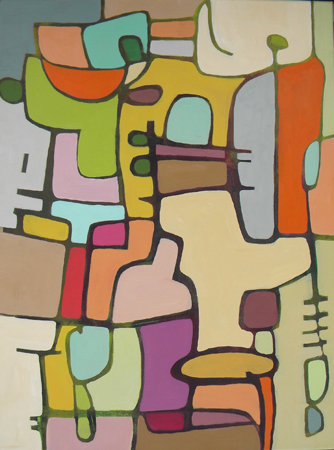
Website – http://www.jessicatorrant.com
